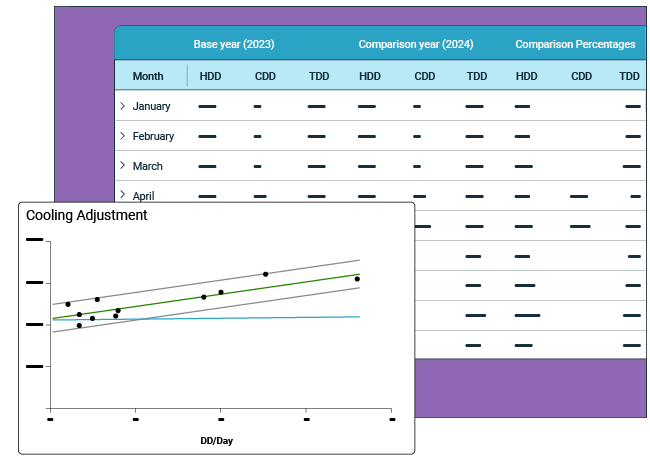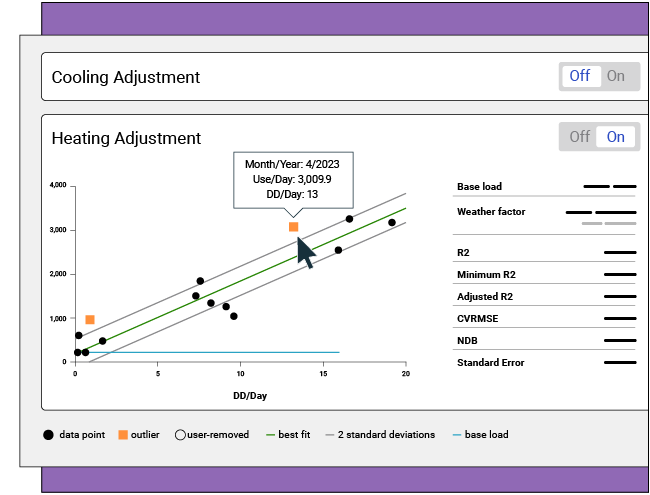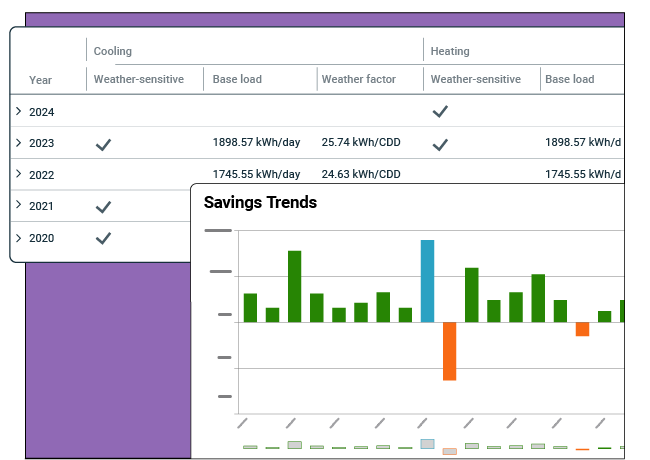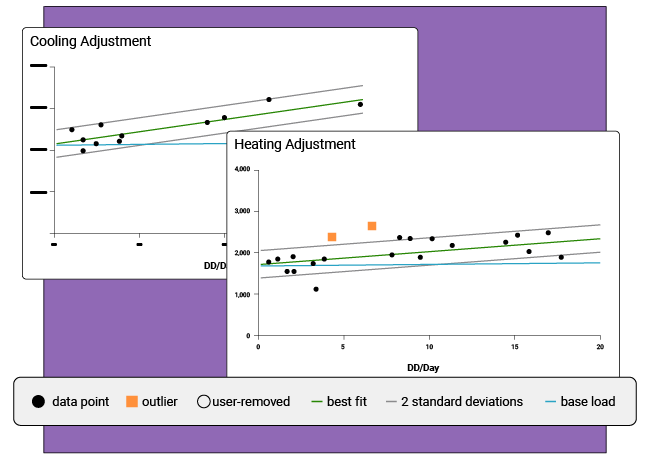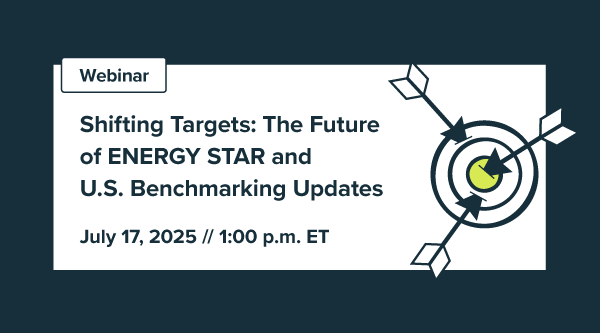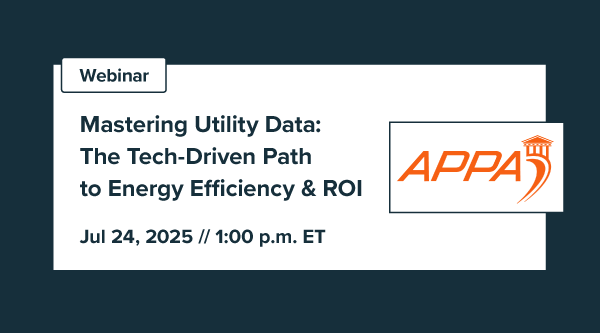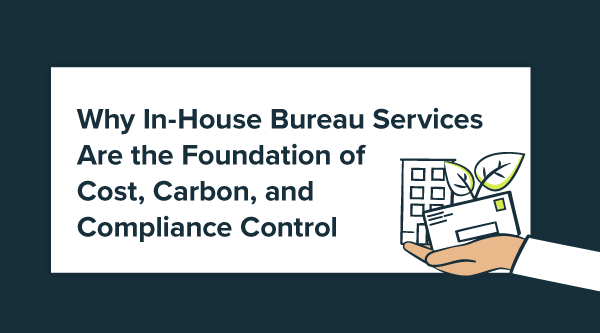Detailed guide to reading cost avoidance baseline charts
On Cost Avoidance Baseline Charts, the vertical axis is the average daily use, and the horizontal axis is the average number of heating or cooling degree days per day. Each black point on the chart represents a utility bill, and the green line is the regression, or best fit, line across these points. If the regression line rises from left to right, it means that months with more degree days have more use, suggesting that at least a portion of the energy usage is weather sensitive.
The horizontal blue line is the non-weather base load and represents energy consumption for things like lighting, appliances, domestic hot water, and electronics.
The two parallel gray lines indicate two standard deviations from the regression line. Any point that falls outside of these lines is considered an outlier, or a point outside the model and not easily predicted, and is indicated by an orange dot.

Best-in-class portfolio-level energy and utility bill data management and reporting.
Real-time energy and sustainability analytics for high-performance, net-zero buildings.
A holistic view of financial-grade scope 1, 2, and 3 carbon emissions data across your entire business.
Energy and sustainability benchmarking compliance software designed for utilities.





